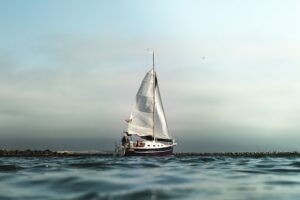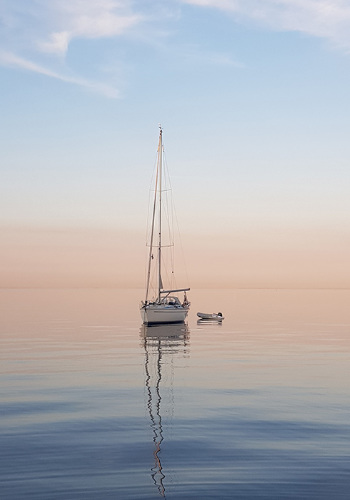Navigating safe waters amidst fluctuating water levels is crucial for boaters to prevent accidents and insurance claims. Weather in Canada can be unpredictable and create many hazards for boaters. According to Canada’s Bedford Institute of Oceanography sea levels will rise quickly during the 21st century. Projections range from a modest 26 centimetres to one full metre of rise by the year 2100. High water levels can cause wave damage, introduce debris into the water, damage docks, and displace buoys and other navigation markers. Mariners are advised that elevated water levels may cause navigation buoys to shift from their designated positions. If you come across a displaced buoy, please report it by sending a safety notice to the Canadian Coast Guard or via Twitter at @CCG-GCC. Minimize risks with safe boating strategies amidst fluctuating water levels.
“Make a trip itinerary, bring a nautical chart and check the weather conditions
Safe boating strategies
Here are some tips to mitigate risks for safe boating strategies.
1. Stay informed: Keep track of weather forecasts and water level updates from reliable sources. Government agencies often provide alerts and advisories regarding water levels, currents, and potential hazards.
2. Plan ahead: Before setting sail, thoroughly plan your route considering the current water levels. Identify potential hazards such as submerged objects, shallow areas, or sudden drop-offs. Adjust your itinerary accordingly to avoid risky areas.
3. Maintain proper boat handling skills: Ensure all operators possess adequate skills and training to navigate under different conditions. Practice maneuvers such as docking, anchoring, and emergency procedures to handle unexpected situations confidently.
4. Invest in navigation equipment: Equip your boat with appropriate navigation tools such as depth finders, GPS systems, and radar. These tools can help you navigate safely, especially in unfamiliar waters or during poor visibility.
5. Monitor water levels: Continuously monitor water levels during your journey, especially in areas prone to rapid changes. Pay attention to signs of rising or falling water levels, such as changes in current speed or floating debris. Use a tide app – such as Tide Times or check out the excellent charts at https://charts.gc.ca/publications/tables-eng.html
6. Maintain a safe speed: Reduce speed in areas with fluctuating water levels to avoid collisions with submerged objects or sudden changes in depth. Slow down when approaching shorelines, docks, or other vessels to prevent accidents.
7. Review insurance coverage: Regularly review your boat insurance policy to ensure adequate coverage for potential risks associated with fluctuating water levels. Consider additional coverage options such as flood insurance or emergency towing assistance.
8. Practice safe boating habits: Follow established boating regulations and guidelines to ensure safety for yourself and others on the water. Maintain a proper lookout, avoid reckless behaviour, and always wear life jackets when boating.
9. Communicate with others: Stay in communication with other boaters, marinas, and authorities to share information about water conditions and potential hazards. This can help create a safer environment for everyone on the water.
10. Be prepared for emergencies: Carry essential safety equipment onboard such as life jackets, first aid kits, signaling devices, and a VHF radio for communication in case of emergencies. Familiarize yourself with emergency procedures and know how to respond quickly and effectively.

Fluctuating water levels present unique hazards for boaters. Rapid changes, caused by tides, flooding rivers, or water releases from dams, can make previously safe navigation areas prone to grounding. Additionally, varying water levels can complicate docking at fixed piers.
Resources for safe boating strategies
Trent-Severn Waterway Boat Info, Parks Canada updates, or on X– @TSWBoaterInfo
Pacific Marine Underwriting Managers: How to launch a boat safely
Safe Harbour Insurance: Navigating the waters, safety tips for first time boaters
Boater Exam: Boating in rough weather
Pacific Marine Underwriting Managers: Understanding boat insurance claims








